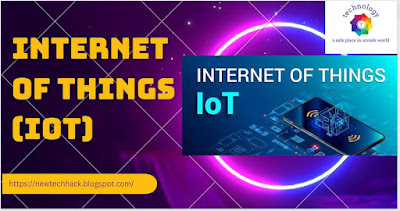The Internet of Things (IoT)
is a revolutionary concept that connects everyday objects to the internet, enabling them to communicate, interact, and share data with each other and with users. It represents a paradigm shift in the way we interact with our environment, introducing a new level of automation, efficiency, and convenience. In this explanation, we will delve into the key components, applications, benefits, and challenges associated with the Internet of Things.
At its core, the IoT consists of three main components: physical devices or objects, connectivity, and data analysis. Physical devices, often equipped with sensors and actuators, are embedded with internet connectivity, allowing them to transmit and receive data. These devices can range from household appliances and wearable devices to industrial machinery and smart city infrastructure. Connectivity is provided through various communication technologies such as Wi-Fi, Bluetooth, cellular networks, and low-power wide-area networks (LPWAN). Data analysis involves collecting, processing, and analyzing the massive amount of data generated by IoT devices to derive meaningful insights and enable intelligent decision-making.
The applications of IoT span across numerous sectors and industries. In smart homes, IoT enables automation and remote control of devices, such as lighting, heating, and security systems, enhancing comfort, energy efficiency, and security. In healthcare, IoT devices monitor patients' vital signs, provide remote healthcare services, and enable the management of chronic conditions. In agriculture, IoT enables precision farming by monitoring soil moisture, temperature, and crop health, optimizing irrigation and reducing waste. Industrial IoT (IIoT) enables predictive maintenance, asset tracking, and real-time monitoring of production processes, leading to improved efficiency and cost savings. Smart cities leverage IoT for efficient energy management, intelligent transportation systems, waste management, and public safety, among other applications.
The Internet of Things brings numerous benefits and transformative opportunities. One of the primary advantages is increased efficiency and productivity. IoT enables automation and optimization of processes, reducing manual intervention, minimizing errors, and improving operational efficiency. For example, in manufacturing, IoT sensors can provide real-time data on equipment performance, enabling predictive maintenance and minimizing downtime.
Another benefit of IoT is improved decision-making through data-driven insights. The vast amount of data generated by IoT devices can be analyzed to identify patterns, trends, and anomalies, allowing organizations to make informed decisions and optimize their operations. For instance, in retail, IoT devices and data analytics can provide insights into customer behavior, enabling personalized marketing and inventory management.
IoT also contributes to cost savings and resource optimization. By monitoring and controlling energy consumption, IoT systems can identify areas of waste and enable energy-efficient practices. In supply chain management, IoT sensors and tracking devices can enhance visibility and traceability, reducing inventory holding costs and improving logistics efficiency.
Furthermore, IoT has the potential to enhance safety and security. In smart homes, IoT devices can detect and respond to threats such as fire, gas leaks, or break-ins, providing early warnings and facilitating timely actions. In transportation, IoT enables real-time monitoring of vehicle conditions, traffic management, and collision avoidance systems, enhancing road safety.
Despite the numerous benefits, the IoT also presents challenges and concerns that need to be addressed. One of the major challenges is ensuring the security and privacy of IoT devices and data. As more devices become interconnected, they become potential targets for cyberattacks. IoT devices often have limited computing power and security features, making them vulnerable to hacking and unauthorized access. Strong encryption, authentication mechanisms, and regular security updates are crucial to mitigate these risks.
Interoperability and standardization are also important challenges for the IoT. With a multitude of devices and communication protocols, ensuring seamless integration and compatibility is essential. Standardization efforts are underway to establish common frameworks and protocols that enable interoperability between different IoT devices and platforms.
Another challenge is the management and analysis of the enormous amount of data generated by IoT devices. Effective data storage, processing, and analytics infrastructure are required to extract meaningful insights and drive actionable outcomes. Additionally, addressing the ethical and legal implications of IoT data, such as data ownership, consent, and data sharing, is essential to protect individual privacy and ensure responsible data usage.
In conclusion, the Internet of Things
is a transformative concept that connects physical objects to the internet, enabling communication, automation, and data exchange. With its wide-ranging applications across industries, the IoT offers increased efficiency, productivity, cost savings, and improved decision-making. However, challenges such as security, interoperability, data management, and privacy need to be carefully addressed to fully unlock the potential of the Internet of Things and ensure its responsible and sustainable implementation.






No comments:
Post a Comment